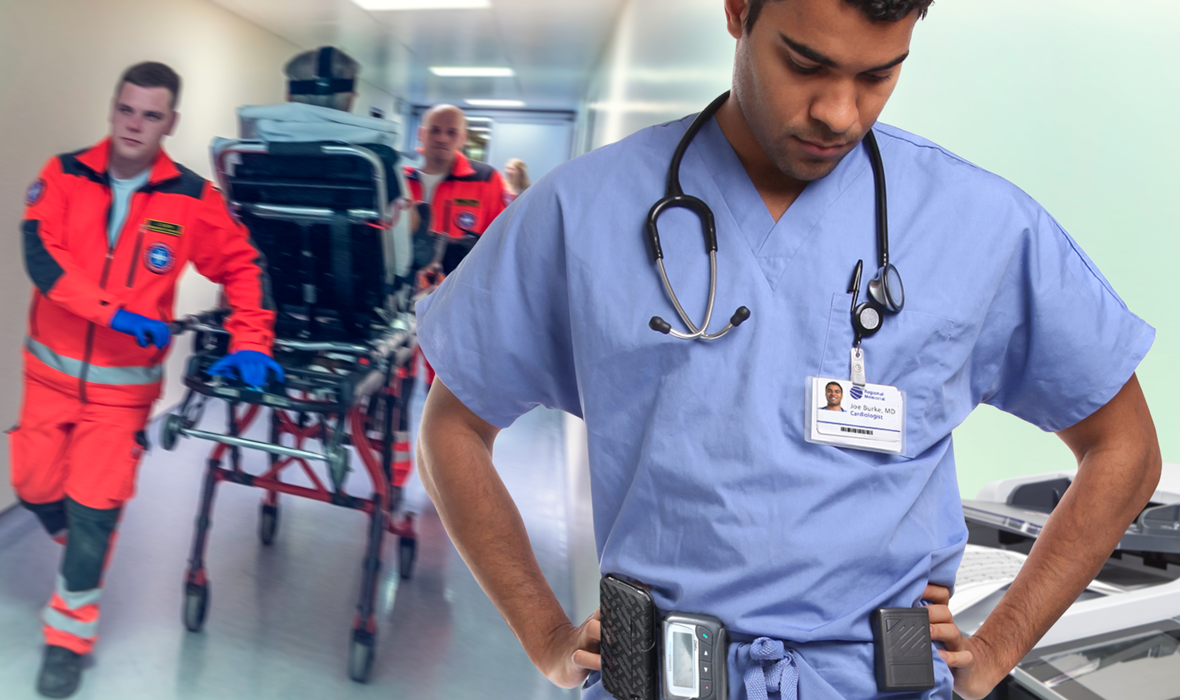Pulsara Around the World - 2025 Recap and January 2026
December Recap After an incredibly busy events year with 102 conferences, trade shows, and sponsorships, December was on the slower side for us, with...

EDITOR'S NOTE: Special thanks to Greg Brown, MN, RN, for writing today's blog post. You can connect with him on LinkedIn.
The biggest pain point I encountered when working nights in the ED was communication — mainly, waiting. Call lists, pagers, and phone trees were our reality when we needed to act fast. But think about it: do we communicate this way in any other aspects of our lives? Why can I order a ride to the airport from a complete stranger with a few taps on my smartphone, but I need to use a pager to connect with providers I know personally? In medicine, when time is of the utmost importance, we still communicate like it’s 1985.
Before I joined the Pulsara team, I was the charge nurse of a busy, yet excellent department. We had an exemplary staff, and I had the pleasure of working with a fantastic provider group. When critical or time sensitive patients would roll through the door, we were ready, but then…we would wait. Wait to see if the page went out, wait until a page was returned, wait until the team arrived, and simply wait some more.
Those waits for each step were no longer than a few minutes in most instances. But these little chunks of time would stack up, working against us, and more importantly hurting our patients. We knew that we had benchmarks to meet. We knew our patients had a greater chance of survival if we kept treatment times as low as possible. We knew we were racing the clock.
So why were we waiting? Two minutes here, four there, another three over there. Do these little ticks of the minute hand even matter? OF COURSE, THEY DO! According to the AHA, every 1 minute of untreated time during an ischemic stroke leads to 1.9 million neurons lost [1]. Every hour a stroke goes untreated equates to as many neuron losses as over three and half years of aging.
Each of these wasted minutes means more tissue lost, longer stays in the hospital, and more potential complications and lasting impairments. So why do we use a system where waiting and wasting critical time is just part of the process?
I call these small gaps “clinical dead space.” This is a gap in treatment time, where the patient has been stabilized and is awaiting definitive care. There are many examples of clinical dead space. One may be a STEMI patient waiting in an ED gurney until the Cath lab arrives. Or the patient in the rural ED waiting for their records to be reviewed so his transfer can be accepted. It may even be waiting to spin up a care team until the cardiologist calls back, and he was just paged 15 seconds ago.
How long do you wait until you move forward with care? All critical patients need to get to definitive care FAST, regardless of service line. Time spent languishing in the ED hurts their chances of survival and recovery.
But before we can work on fixing and optimizing our care processes, we need to break our habit of saying, “This is the way we always have done it.” Or, “Our times are good, we average under the national guidelines for care times.” What if we can get BETTER? What if we can save MORE neurons, more heart cells, more lives? Two minutes waiting for a call back doesn’t seem bad, unless we or our loved ones are the ones in the cot.
Optimizing communication can have a huge impact on reclaiming lost treatment time. The ability to connect to specialty providers with a tap of a smartphone saves time and frustration. Being able to connect in real-time with a provider miles away in a hub facility to consult and transfer a trauma patient streamlines a complex process. Transmitting a diagnostic 12 lead ECG from the field to the cardiologist at the hospital can be done in under 90 seconds, saving precious time and reducing ED crowding.
Virginia Mason Medical Center in Seattle recognized the crucial role of efficient communication in healthcare, and reduced their stroke treatment times by 22% using Pulsara, a healthcare communication platform that connects teams across organizations. Virginia Mason refused to settle for “good enough.”
How much clinical dead space could your facility reclaim? Whether you’re a small hospital in rural Montana, or a Level-1 Trauma Center in California, one thing is true: we can always communicate better, especially when patients depend on it. It’s About People.
References

December Recap After an incredibly busy events year with 102 conferences, trade shows, and sponsorships, December was on the slower side for us, with...

Editor's Note: In July 2025, EMS1 and Fitch & Associates released their annual EMS trend survey, What Paramedics Want, proudly sponsored by Pulsara....
![[PRESS RELEASE] Published Research Finds Up to 31% Faster STEMI Treatment Times in Rural Hospital Setting with Pulsara](https://www.pulsara.com/hubfs/_1_website-page-blog-assets/pulsara-hosp-teams-assign-cardio-stemi-rn-1200x701.jpg)
Published research shows how using Pulsara, alongside standardized field activation and a focus on stakeholder relationships, improves STEMI care and...